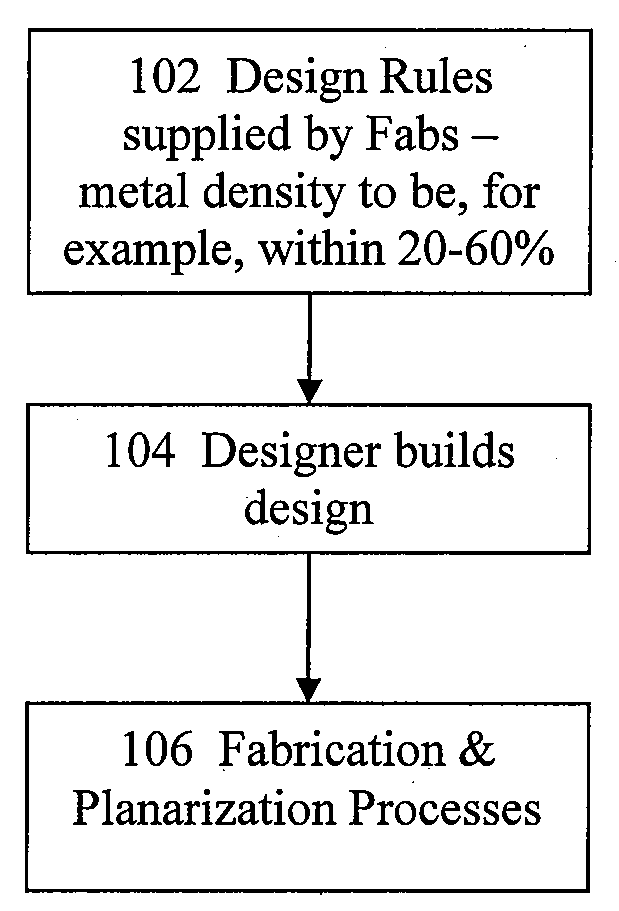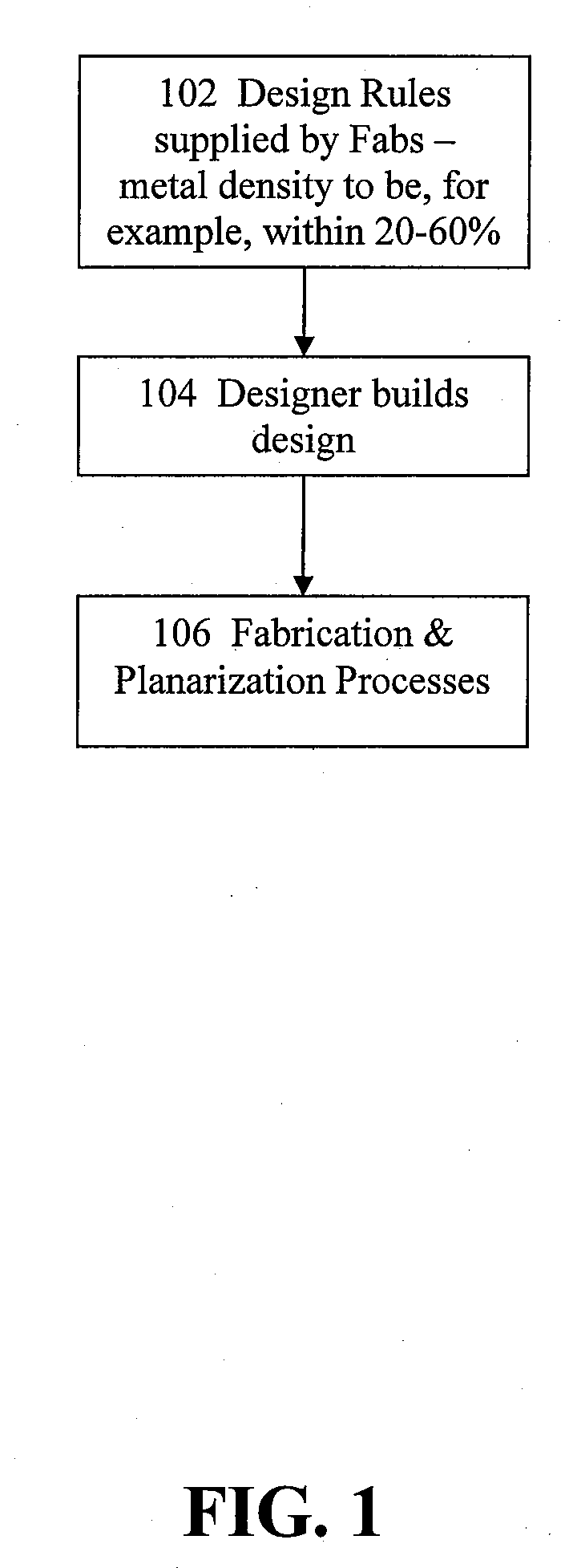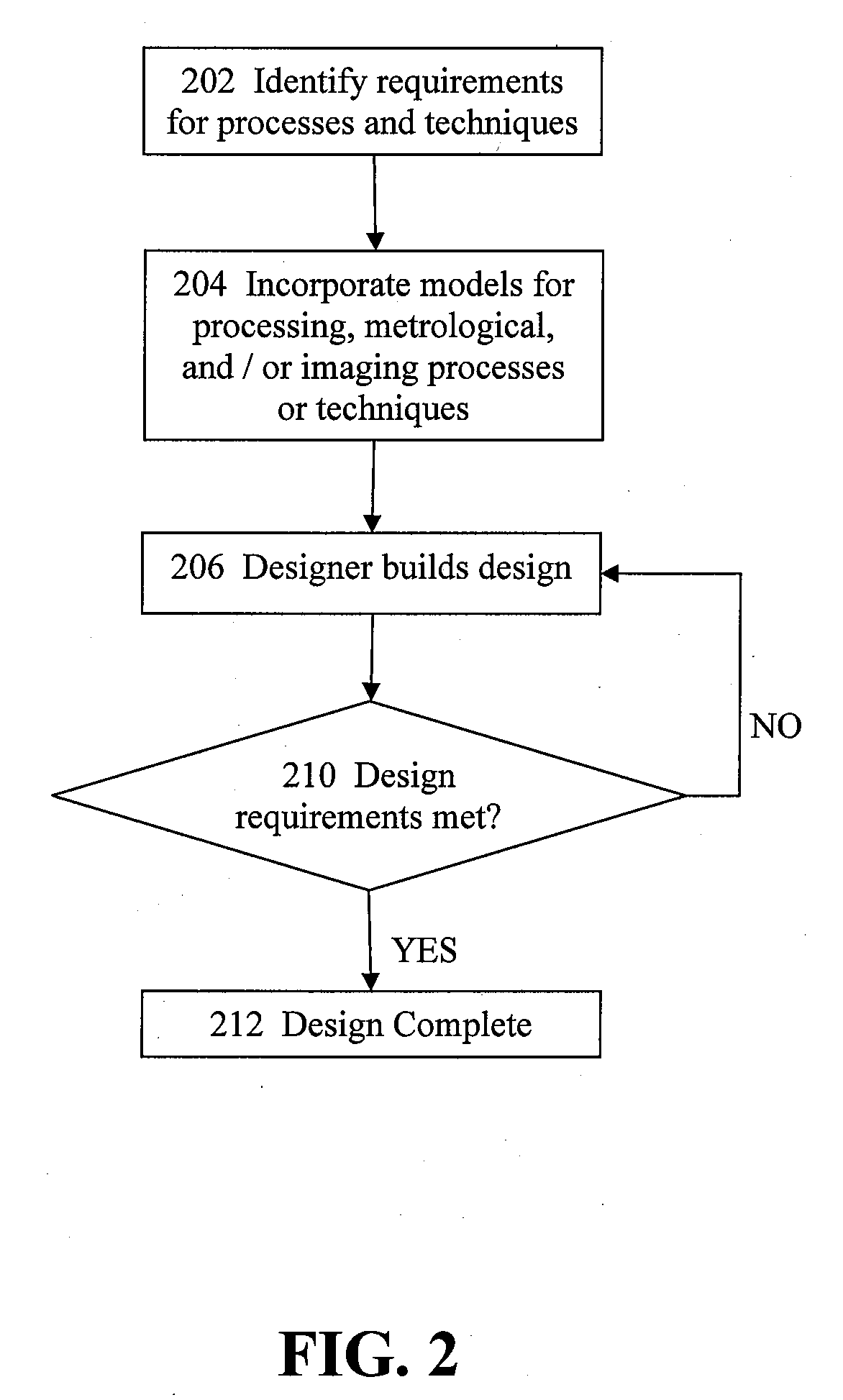Supplant design rules in electronic designs
a technology of electronic designs and design rules, applied in computer aided design, program control, instruments, etc., can solve the problems of reducing the design goal of the semiconductor, so as to achieve the effect of reducing the cost of other wires and reducing the size of the wires
- Summary
- Abstract
- Description
- Claims
- Application Information
AI Technical Summary
Benefits of technology
Problems solved by technology
Method used
Image
Examples
Embodiment Construction
[0022]Various embodiments of the present invention are directed to an improved method, system, and computer program product for performing floorplanning, layout, placement, routing, and post-wiring optimization for electronic designs. As noted above, conventional methods and systems merely define some upper and lower thresholds for metal densities and manipulate the wire widths and metal fill to determine whether the metal density rules are satisfied.
[0023]Various embodiments of the invention may be implemented in numerous ways, including as software, hardware (e.g., circuitry), a process, an apparatus, a system, a method, or as a set of instructions on a computer readable medium such as a computer readable storage medium or one or more storage devices on a computer network wherein program instructions are sent over optical or electronic communication links. In general, the actions of disclosed processes may be performed in an arbitrary order, unless otherwise provided in the claims...
PUM
 Login to View More
Login to View More Abstract
Description
Claims
Application Information
 Login to View More
Login to View More - R&D
- Intellectual Property
- Life Sciences
- Materials
- Tech Scout
- Unparalleled Data Quality
- Higher Quality Content
- 60% Fewer Hallucinations
Browse by: Latest US Patents, China's latest patents, Technical Efficacy Thesaurus, Application Domain, Technology Topic, Popular Technical Reports.
© 2025 PatSnap. All rights reserved.Legal|Privacy policy|Modern Slavery Act Transparency Statement|Sitemap|About US| Contact US: help@patsnap.com



